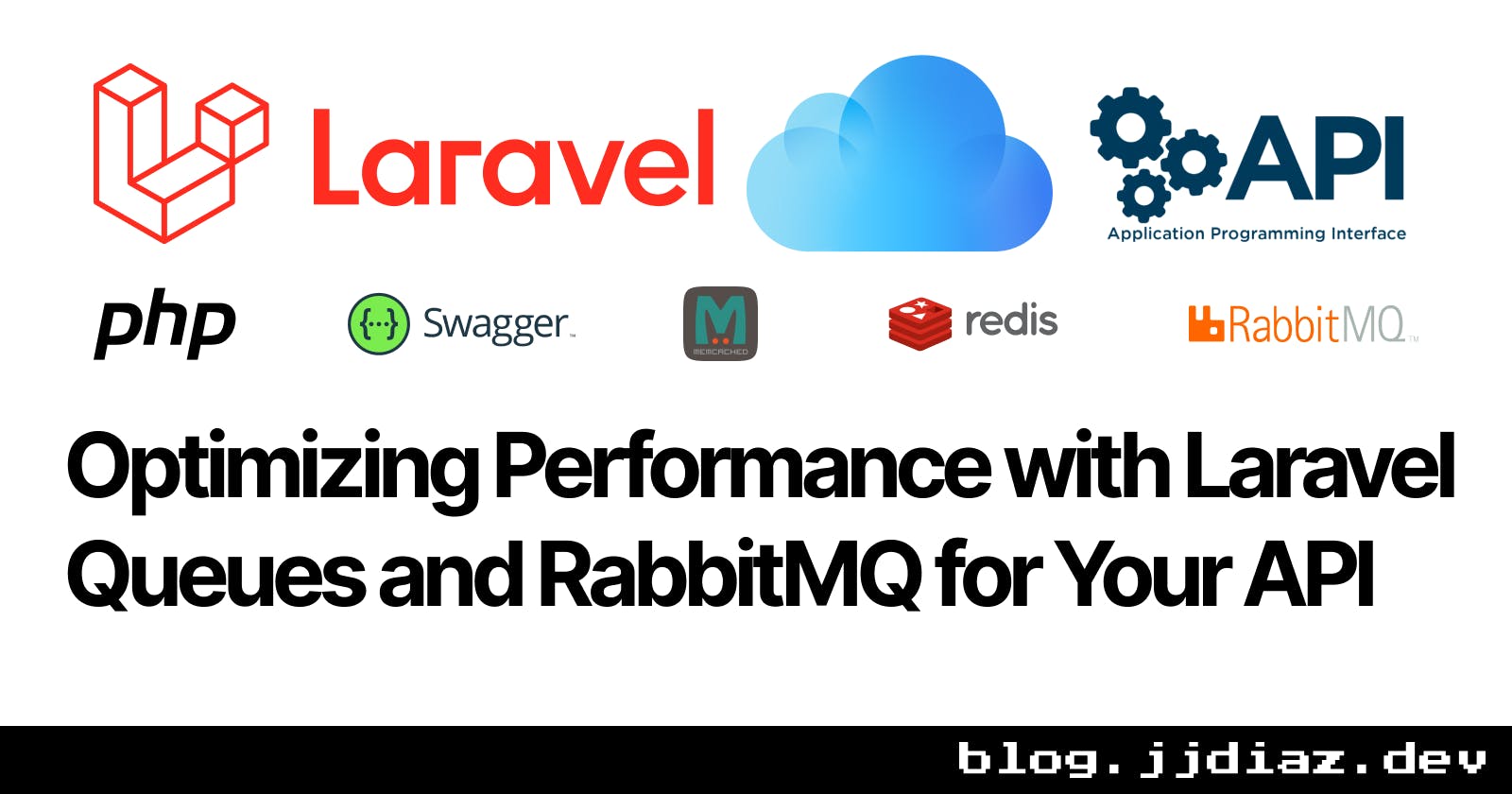Optimizing Performance with Laravel Queues and RabbitMQ for Your API
Integrating RabbitMQ into your Laravel API for Asynchronous Task Processing
As a developer, it is important to consider the performance and scalability of your API. One way to improve the performance of your API is to offload resource-intensive tasks from the main request-response cycle. This can be achieved using a queue system, which allows you to process tasks asynchronously and avoid blocking the main thread. In this blog post, we will explore how to use the Laravel queue system with RabbitMQ to offload resource-intensive tasks and improve the performance and scalability of your API.
What is a queue system?
A queue system is a way to manage tasks that need to be performed asynchronously. Instead of performing the tasks immediately, they are added to a queue and processed at a later time. This allows the main thread to continue processing requests without being blocked by resource-intensive tasks.
What is RabbitMQ?
RabbitMQ is an open-source message broker that implements the Advanced Message Queuing Protocol (AMQP). It allows you to send, receive, and process messages asynchronously, making it a popular choice for use as a queue system.
Why use the Laravel queue system with RabbitMQ?
There are several reasons why you might want to use the Laravel queue system with RabbitMQ in your API:
Performance: Offloading resource-intensive tasks to a queue can improve the performance of your API by allowing the main thread to continue processing requests without being blocked.
Scalability: Using a queue system can also improve the scalability of your API, as it allows you to process tasks asynchronously and handle a larger number of requests without overloading the server.
Reliability: A queue system can also improve the reliability of your API, as it allows you to retry failed tasks and ensure that all tasks are completed successfully.
How to use the Laravel queue system with RabbitMQ
Laravel is a popular PHP framework that provides a queue system out of the box. Here is how you can use the Laravel queue system with RabbitMQ to offload resource-intensive tasks from the main request-response cycle:
Set up RabbitMQ: You will need to install and set up RabbitMQ on your server.
Set up the Laravel queue driver: In your Laravel project, you will need to set the queue driver to
rabbitmqand configure the connection settings in thequeue.phpconfiguration file.Create a job: A job is a class that represents a task that needs to be performed. To create a job, you will need to use the Artisan command
php artisan make:job.Dispatch the job: To add a job to the queue, you will need to use the
dispatchmethod. You can dispatch a job from anywhere in your code, such as a controller or a service.Process the queue: Finally, you will need to process the queue using a queue worker. Laravel provides a command
php artisan queue:workthat starts a queue worker and processes the tasks in the queue.
Conclusion
Using the Laravel queue system with RabbitMQ can help you improve the performance and scalability of your API by offloading resource-intensive tasks from the main request-response cycle. By processing tasks asynchronously, you can avoid blocking the main thread and ensure that your API can handle a large number of requests without overloading the server. If you are using Laravel to build your API and want to take advantage of RabbitMQ powerful message-brokering capabilities, be sure to consider using the Laravel queue system with RabbitMQ to improve the performance and scalability of your application.
In summary, the Laravel queue system with RabbitMQ is a powerful tool for offloading resource-intensive tasks and improving the performance and scalability of your API. By using RabbitMQ as the queue driver, you can take advantage of its advanced message-brokering capabilities and process tasks asynchronously to avoid blocking the main thread. If you want to improve the performance and scalability of your Laravel API, be sure to consider using the Laravel queue system with RabbitMQ.


